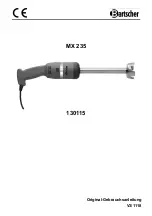
VLT® 7000 Booster
■
High voltage test
A high voltage test can be carried out by short-circuiting
terminals U, V, W, L1, L2 and L3 and energizing
by max. 2.5 kV DC for one second between
this short-circuit and the chassis.
NB!:
The RFI switch must be closed (position
ON) when high voltage tests are carried out.
The mains and motor connection must be
interrupted in the case of high voltage tests of the total
installation if the leakage currents are too high.
■
Heat emission from VLT 7000 Booster
The tables in
General technical data
show the
power loss P
(W) from VLT 7000 Booster. The
maximum cooling air temperature t
IN MAX
, is 40°
at 100% load (of rated value).
■
Ventilation of integrated VLT 7000 Booster
The quantity of air required for cooling frequency
converters can be calculated as follows:
1.
Add up the values of P
for all the frequency
converters to be integrated in the same panel.
The highest cooling air temperature (t
IN
) present
must be lower than t
IN, MAX
(40°C). The day/night
average must be 5°C lower (VDE 160). The
outlet temperature of the cooling air must not
exceed: t
OUT, MAX
(45° C).
2.
Calculate the permissible difference between
the temperature of the cooling air (t
IN
) and
its outlet temperature (t
OUT
):
t = 45° C-t
IN
.
3.
Calculate the required
quantity of air =
m
3
/h
insert
t in Kelvin
The outlet from the ventilation must be placed above
the highest-mounted frequency converter. Allowance
must be made for the pressure loss across the
filters and for the fact that the pressure is going
to drop as the filters are choked.
MG.70.A1.02 - VLT is a registered Danfoss trademark
28
















































